Chamomile
holiday chill
At weedom, we’re normally going in a different direction than the general flow. When the bustle of the holiday season has people all worked up, we think it’s time to slow down. Join us! It’s the perfect time to discuss chamomile, which confers peace and tranquility to the brain and the gut, and quenches inflammation everywhere. The list of this well-studied plant’s benefits is massive, and thus it deserves top shelf in your herbal collection.
Chamomile reseeds itself well enough to deserve honorary weed status, so that’s our excuse to present this most essential herb, which is normally cultivated purposefully. For all the medicinal value of this plant, you’d think that it would necessarily taste crappy. But the flavor is pretty good, perhaps even sufficient to help with the flavors of some less palatable herbs. Bitterness becomes more noticeable with the stronger infusions. Join in our out-of-season adventures with German chamomile, and, if you haven’t already done so, consider grabbing some dried flowers to use now, and some seeds for next year. (Our readers in temperate climates down under might be able to get some growing right now.)
If you decide to grow chamomile when it ought to be grown, in the longer days of Spring or Summer, it will rise up and bloom in about 10 weeks or so. The German chamomile, most often used for tea, produces zillions of tiny seeds which fall to the ground, and will sprout and grow from the surface whenever enough moisture and sunlight hits them. A pound (454 g.) of seeds is about enough to cover an acre with plants. German chamomile is not frost tolerant, though it can survive some cold temperatures. Last year we planted some of our chamomile as an afterthought, too late in the summer, and blooms were not happening. So we decided to overwinter a bunch of the plants in the greenhouse where they survived under a second sheet of plastic, (with outside temps plunging to single digits, F.) until Spring. They sat there, at a height of 3 or 4 inches and looked at us until April, when some taller stems finally emerged, and began showing some buds.

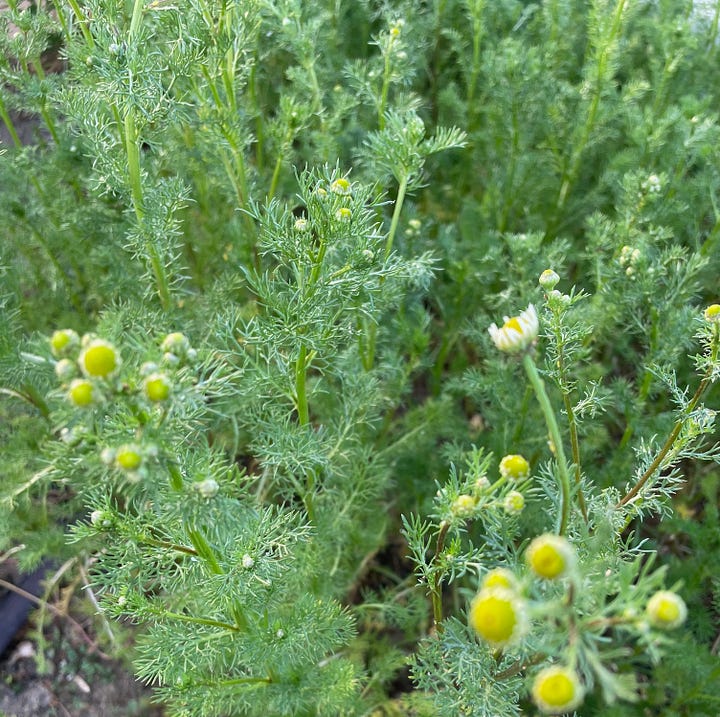
Full bloom occurred throughout May and into June, during which we clipped the flowers and dried them, to produce what you can see in the jar above. It takes many weeks at ambient temperatures to dry chamomile flowers. They contain some hygroscopic (water attracting) components which impede drying on humid summer days. You’ll be waiting for some dry days, or will need assistive means to get these blooms desiccated enough to pack in tightly sealed containers. When in doubt, leave them loose in the dark so they can dry some more.
These full blooms are what you’re looking for, and the drying process shrinks the disc flowers considerably, and the petals to the tiniest cream colored slivers. You can obtain multiple harvests of flowers from these plants, which produce 5 or so flushes of blooms.
Our flowers dried in a dark attic space with a fan running for over a month. (Next year, we dream of employing a freeze dryer for some herbal processing). Over time, the bright yellow of the disc flowers fades to a brownish color, the ray flowers become cream colored, and the apple to pineapple scent becomes more prominent.
Good luck with the botany of this plant. German chamomile, of the daisy family Asteraceae, has a bunch of Linnaean names. Lately it’s Chamomilla chamomilla, but it’s also been called Chamomilla recutita, Matricaria recutita, Matricaria chamomilla and Matricaria suaveolens. It’s going to take longer than our lifetimes for any consensus to occur, so get used to seeing all the names. Some etymological games might help to make sense of the nomenclature. Chamomilla was derived from Greek words implying ground, ‘khamai’, and apple, ‘melon’. The leaves especially have an apple like flavor when crushed. Matricaria comes from Latin mater, and caria, beloved.
German chamomile produces alternate, bipinnately arranged fine leaves which are absolutely hairless, on erect stems. These leaves become more sparse as the flowering stems reach upward to a height of 2 feet or more (0.6 meter). Flower heads appear daisy like, but with domed centers of tubular ray flowers, and only a single layer of 10-25 petals. Both the flowers and leaves are edible and usable fresh or dried. Medicinal compounds are most concentrated in the flowers, though they are present also in the leaves. Both give off the characteristic apple to pineapple scent when crushed.
There are several chemotypes of chamomile grown commercially which vary in content of the sesquiterpenes, chamazulene and alpha bisabolol, or bisabolol racemic mix, or bisabolol oxide. These compounds are highly valued for medicinal, cosmetic and industrial uses. One can find a whole line of Cetaphil branded cosmetics incorporating the (-)-alpha-bisabolol for anti-aging and brightening effects upon the skin. Those products designed to address eczema list bisabolol, but not as the “active ingredient”, (perhaps to keep the FDA away). From matricin, a sesquiterpene lactone, comes the famously blue component of chamomile essential oil, called chamazulene, which seems to be most easily converted by the process of steam distillation. Both the matricin and chamazulene are active medicinally and anti-microbially. These among numerous flavonoids found in chamomile are responsible for the wide array of established wound healing, anti-microbial, antipyretic, anti-inflammatory, anti-spasmodic, vasorelaxant, anti-oxidant and neuroprotective activities of the plant, Chamazulene and bisabolol are also found in numerous other medicinal plants, such as yarrow and the Artemisia species.
Apigenin is the compound most associated with the anti-anxiety effect of chamomile, though it’s not the only contributing element. It appears to affect GABA-A receptors, and is inhibited by flumazenil (the antidote used for overdoses of benzodiazepines like Valium and Xanax). But apigenin does not exhibit nearly the anti-seizure activity, nor amnesia that are produced by benzodiazepines. There is greater separation between the anxiolytic dose and the sedative dose, than with benzodiazepines, which means that apigenin and its plant source can perhaps relieve more anxiety with less impairment. (Happy Holidays!)
There is also Roman chamomile, Chamaemelum nobile, a low growing perennial plant which is similar in usefulness to German chamomile, but has different proportions of constituents, more esters and proportionately less sesquiterpenes. It’s utility leans more towards antispasmodic and sedative activity, while the German chamomile is more used for anti-inflammatory and analgesic activity and to address female specific issues. They are of different genera, and some herbalists use them interchangeably. Matricaria discoidea, the little pineapple weed that grows in the cracks of sidewalks and in weedom’s gravel driveways, shares many constituents with chamomile. This edible weed has been utilized in fine culinary preparations as exemplified by chef
whose publication is below.Among many uses, Chamomile exhibits the following activities: carminative, antispasmodic cholegogue, anti-inflammatory, antibiotic (better on gram + organisms) antiviral, antifungal, anti-parasitic, anti-ulcer, emmenagogue, mild vulnerary, nervine, vertigo sedative, anti-anxiety, galactogogue (stimulates milk production), etcetera. Chamomile shares some of the functions of hops, valerian, artemesias, and achillea species. Well over 100 active constituents are present. As an emmenogogue, possessing a bit of activity on hormone receptors, we don’t suggest consuming medicinal doses during pregnancy. On the other hand, the tiny amount found in a little chamomile tea bag, or the topical application to a small wound or rash is unlikely to do harm. Those who are allergic to other members of the Asteraceae, such has ragweed, or artemisias, should be very cautious with chamomile. There have been reports of severe cross reactive allergic reactions . Also some liver enzymes which metabolize drugs are affected by chamomile, which could influence levels of such drugs as cyclosporine, (used for transplant patients, etc.)
Alcoholic extracts of chamomile tend to exhibit more anti-bacterial activity, and some antiviral activity, while aqueous extracts show activity against yeasts and molds. Medicinal doses of gentle, German chamomile for anxiety, sedation, infections or parasites are much larger than used at the usual tea time. Strong infusions employing 9-15 grams of dry herb per day are used for these issues, and similarly strong infusions are used topically for skin irritations.
Lastly, we should address holiday gut rescue. As an antispasmodic, carminative and anti-inflammatory, chamomile is extremely helpful in matters of gastrointestinal upset.
For a gassy belly ache, you could combine equal parts of chamomile flowers, catnip, fennel seed, and marshmallow root in a tea. Start with 2 teaspoons of the finely ground mixture in liquid.
If you’ve eaten the wrong food, and things are speeding through your GI tract so fast that they stay liquid, you can calm things down with some chamomile, sage, marshmallow and psyllium seed. Perhaps 1 part of the first 3 ingredients, and 2 parts of psyllium by weight. 4 teaspoons of this finely ground mixture in plenty of liquid might quiet the guts. (Psyllium should never be taken without a full glass of liquid. Because it’s called a laxative, it seems counter intuitive but since it’s fiber, it will help solidify things.)
Let there be peace in your digestive tract, and everywhere else too!!



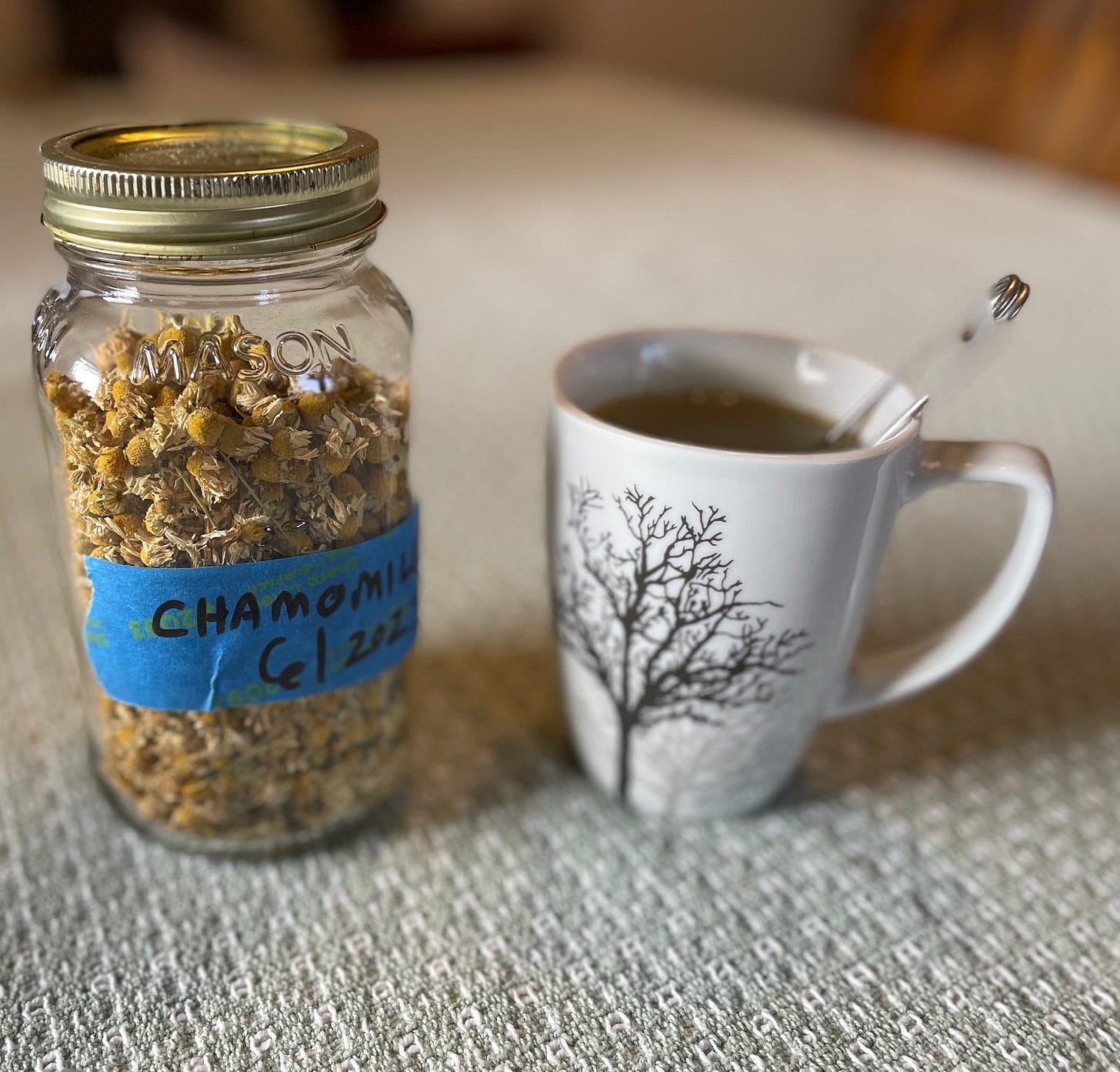
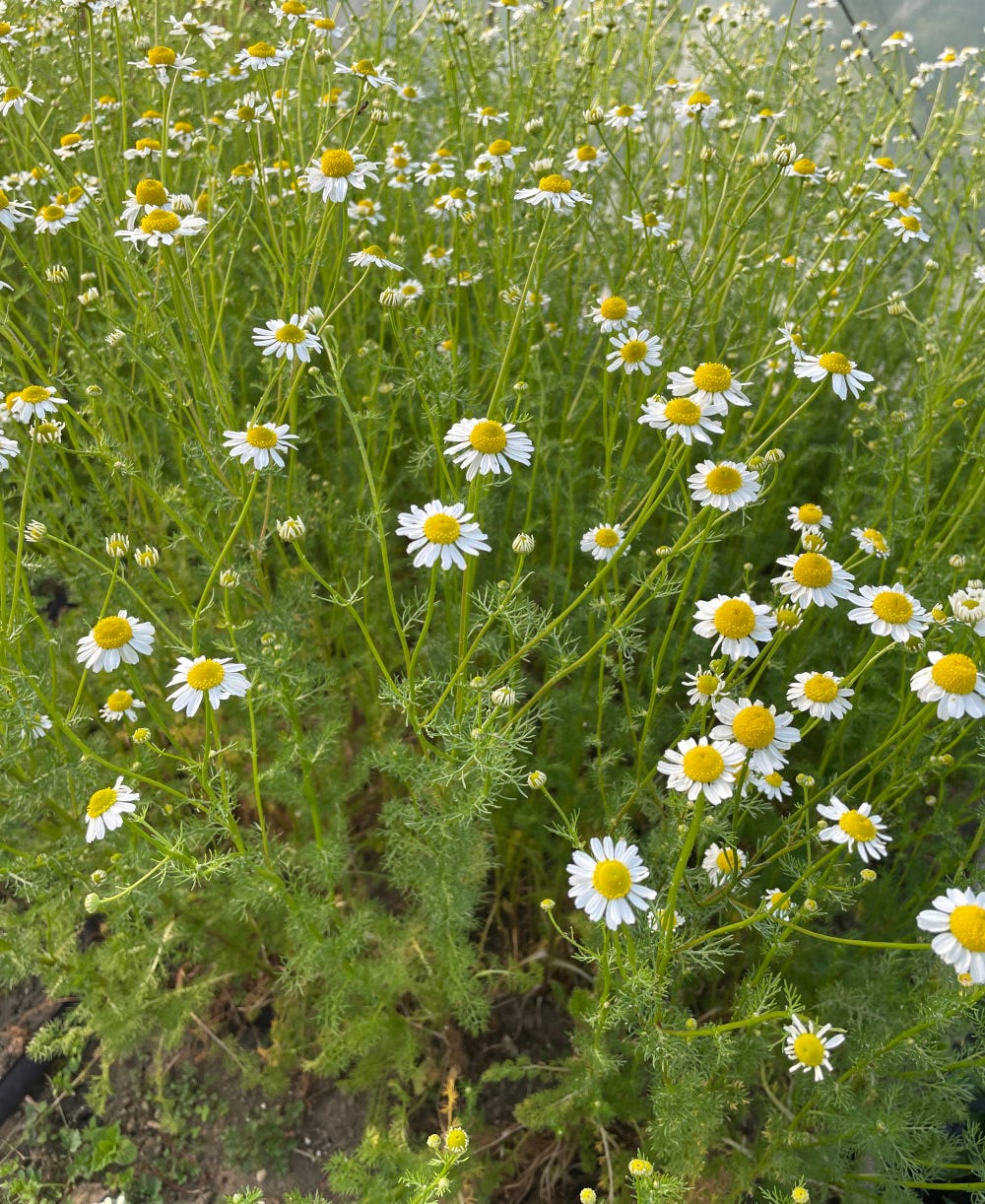
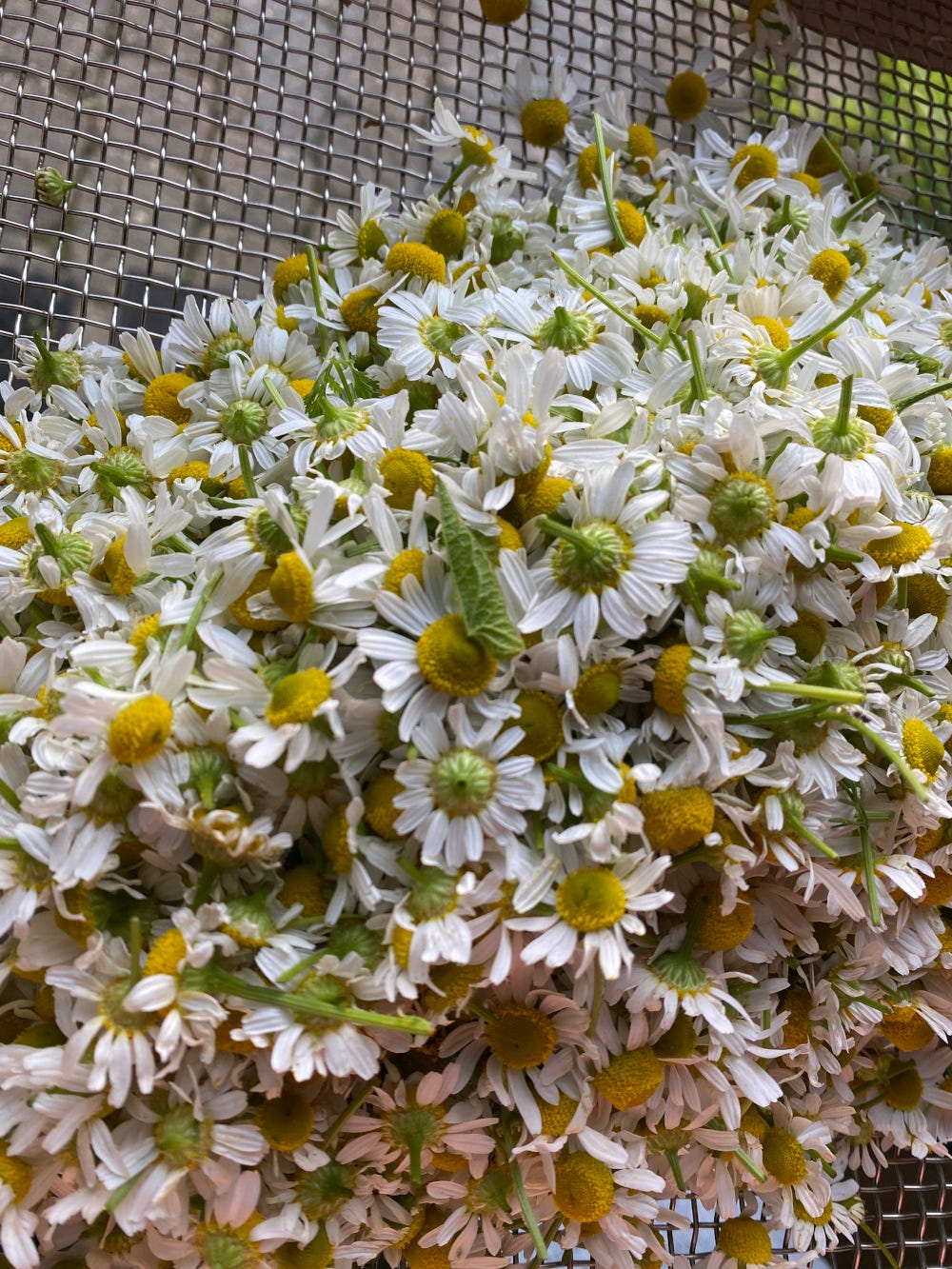

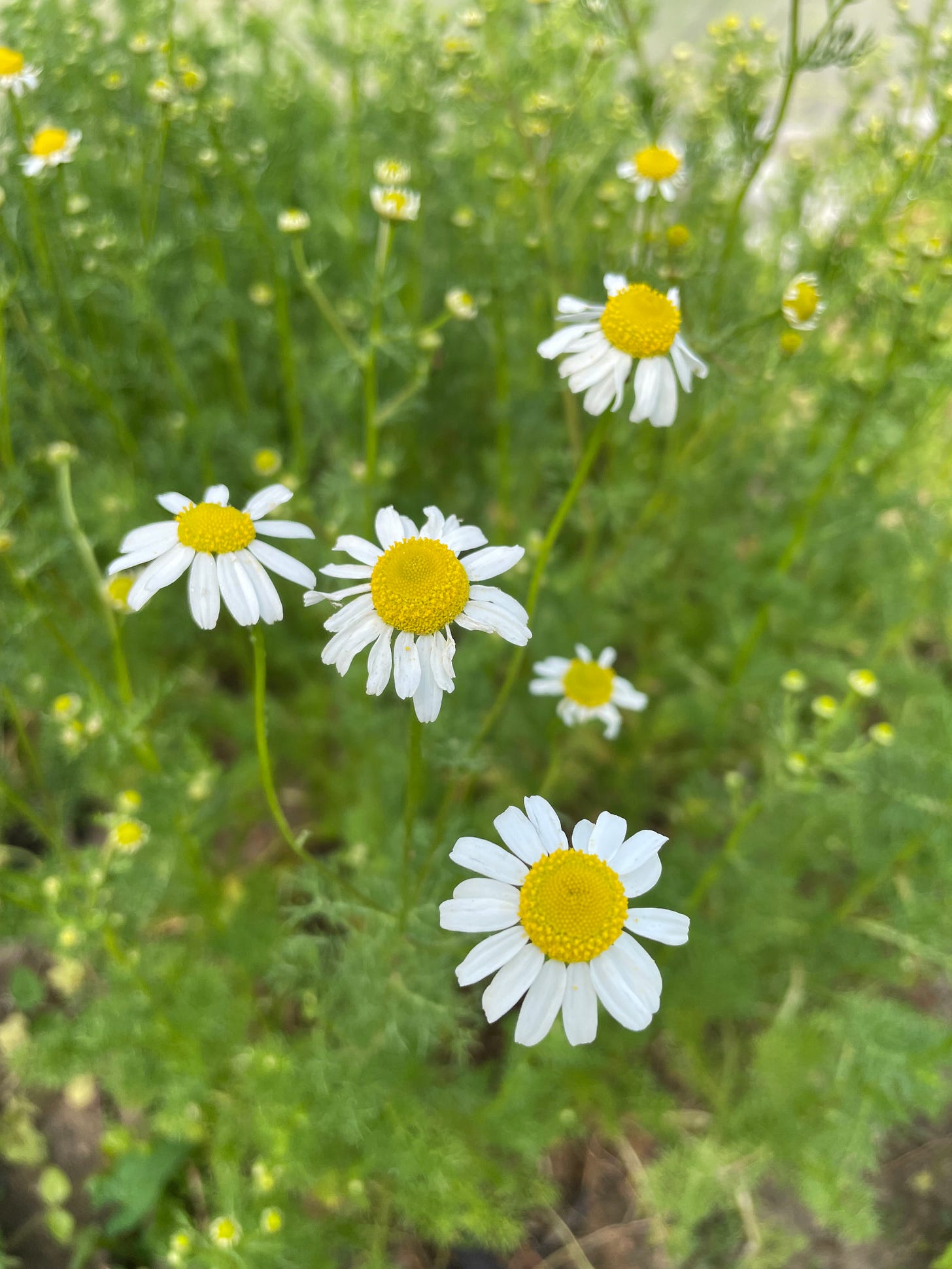


My favourite wild vegetable! I sure am missing it now the world here in Finland is entirely covered in snow. Thanks ever so much for sharing my pie recipe.
You're in a smart family. All the guessing and buying is stressful.
Throw a little potluck party instead! Less work, more fun.